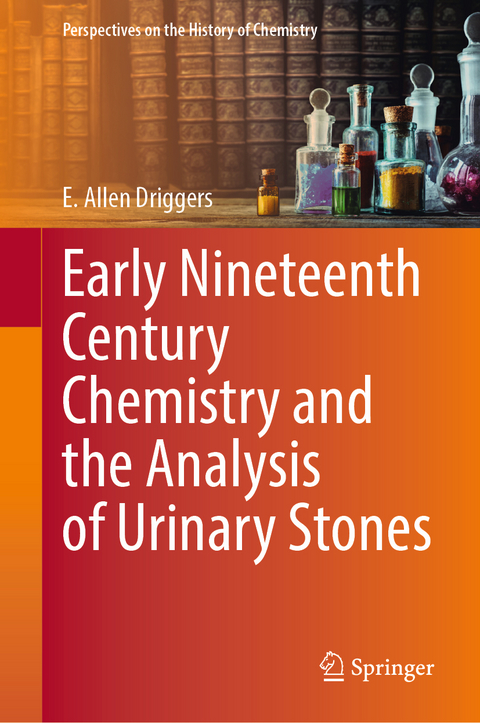
Early Nineteenth Century Chemistry and the Analysis of Urinary Stones
Springer International Publishing (Verlag)
978-3-031-34972-0 (ISBN)
This book tells the story of how chemists, physicians, and surgeons attempted to end the problem of urinary stones. From the late eighteenth to the early nineteenth centuries, chemists wanted to understand why the body formed urinary, pancreatic, and other bodily stones. Chemical analysis was an exciting new means of understanding these stones and researchers hoped of possibly preventing their formation entirely. Physicians and surgeons also hoped that, with improved chemical analysis, they would eventually identify substances that would reduce the size of stones, leading to their easier removal from the body. Urinary stones and other stones of the body caused the boundaries of surgery, chemistry, and medicine to blur. The problem of the stone was transformational and spurred collaboration between chemistry and medicine. Some radical physicians in America and Britain combined this nascent medical advancement with older disciplines, like humoral theory. Chemists, surgeons, and physicians in Charleston, Philadelphia, and London focused on the stones of the body. Chemical societies and museums also involved themselves in the problem of the stone. Meanwhile, institutions in Charleston, Philadelphia, and London served as repositories of specimens for testing and study as previously disparate practitioners and disciplines worked toward the comprehensive knowledge that could, perhaps, end suffering from stones. The primary audience of this book is historically-minded chemists, surgeons, physicians, and museum professionals.
E. Allen Driggers is an associate professor of the history of science at Tennessee Technological University in Cookeville, Tennessee, United States of America. He teaches courses in the history of science, British History, food studies, engineering studies, and the history of South Asia. He has several publications in early nineteenth century medicine and science, from the history of botany, engineering, dinosaurs, and urinary stones. He is working on his next book project about the history of medicine in British India. He is married to fellow academic Dr. Laura Elizabeth Smith, whom he sometimes collaborates with on articles regarding science and race. They have two dogs, one cat, and one child in the turn of the nineteenth century town of Sparta, Tennessee (1809).
The Pain of the Stone: Backgrounds of Urological Chemistry in the Nineteenth Century.- No Stone Unturned: The Chemistry of Morbid Concretions.- Race, Concretions, and Humoral Theory in the World of Benjamin Rush.- Medico-Chemistry and the American South: The Life of Edward Darrell Smith.- Radicalism and Humoral Chemistry: Thomas Cooper's Atlantic Journeys.- Partnerships Between Surgeons and Chemists.- Communities, Chemistry, and Communication: Intellectual Societies in London, Philadelphia, and Charleston.- The Meaning of Bodily Concretions, History, and Concluding Remarks.
| Erscheinungsdatum | 15.07.2023 |
|---|---|
| Reihe/Serie | Perspectives on the History of Chemistry |
| Zusatzinfo | XVII, 188 p. 20 illus., 16 illus. in color. |
| Verlagsort | Cham |
| Sprache | englisch |
| Maße | 155 x 235 mm |
| Gewicht | 469 g |
| Themenwelt | Studium ► Querschnittsbereiche ► Geschichte / Ethik der Medizin |
| Naturwissenschaften ► Chemie ► Allgemeines / Lexika | |
| Schlagworte | History of Chemistry • History of Humoral Theory • history of medicine • History of Science • History of the Nineteenth Century • History of Urinary Stones • Philosophy of Medicine • philosophy of science • Royal College of Physicians and Surgeons • Urinary Calculi |
| ISBN-10 | 3-031-34972-5 / 3031349725 |
| ISBN-13 | 978-3-031-34972-0 / 9783031349720 |
| Zustand | Neuware |
| Informationen gemäß Produktsicherheitsverordnung (GPSR) | |
| Haben Sie eine Frage zum Produkt? |
aus dem Bereich


